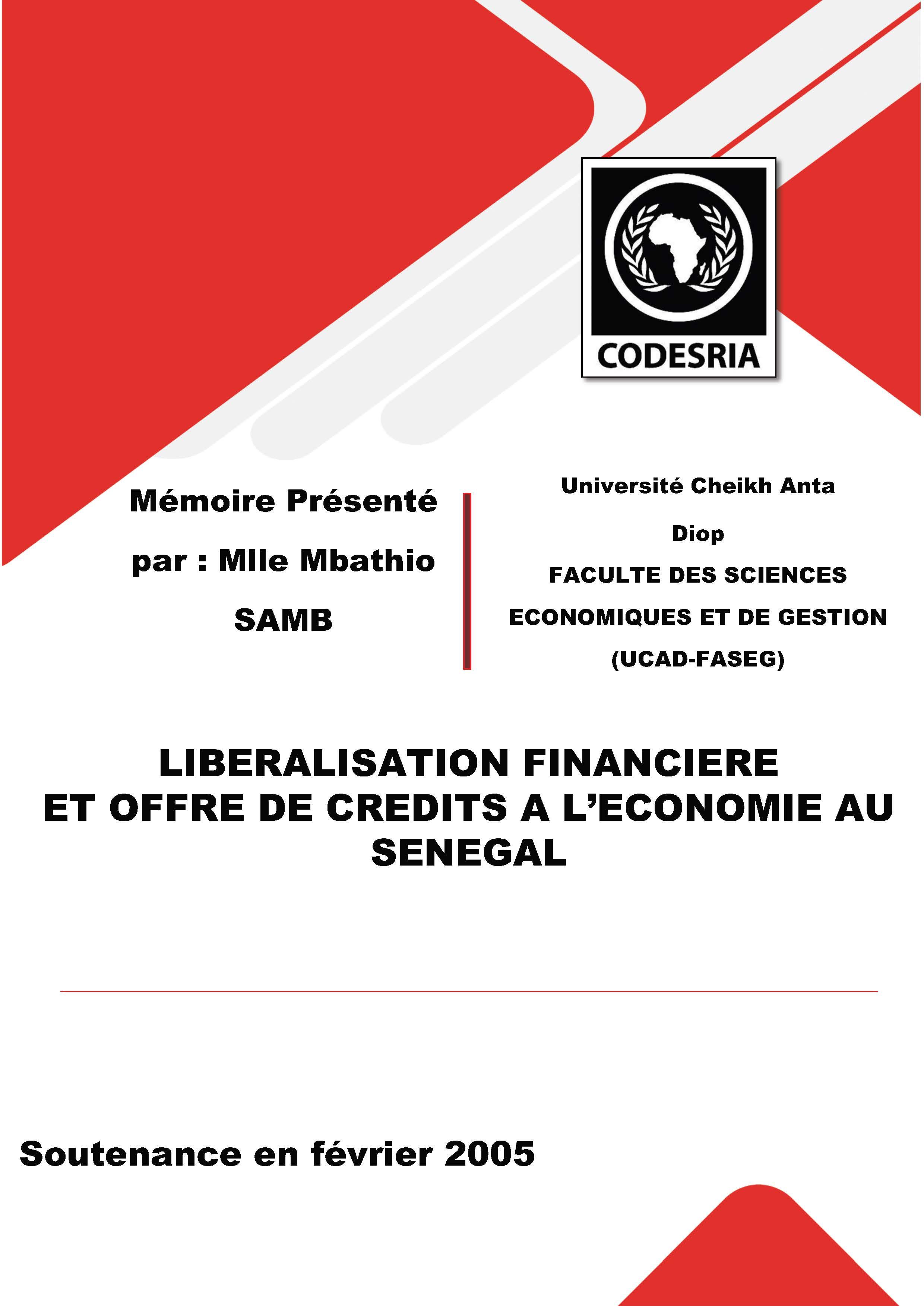LIBERALISATION FINANCIERE ET OFFRE DE CREDITS A L’ECONOMIE AU SENEGAL
Keywords:
Sénégal, Libéralisation Financière, Crédits à l’économie, taux d’intérêtSynopsis
Senegal, with UEMOA’s others countries, has been undertaking reforms of its financial sector as part of broader macroeconomic adjustment program and structural reform since the end of 1980s. Reforms of this kind have cleaned up some countries’ financial system, whereas in other economies the financial sector have experienced serious crisis. This paper investigates the impact of interest rates’ financial liberalization on credit supply mechanisms in Senegal. We investigate the question whether financial liberalization has real impact in credit supply mechanisms. From theories and recent surveys on the theme, we explore this question, using direct evidence on factors sensitive to influence supply of loans in Senegal between years 1970 and 2001. The research employs an error correction mechanism and two periods estimation (before and after FL) to show interest rate changes effects on supply of credits. Hence, our results show that interest rate’s chocks can be antagonistic on loans’ supply. The findings reveal that the most significant driver of credit supply function is collaterals, interest rates and margin spread. Another one important effect of financial liberalization is the reduction of liquidity constraints.
Downloads
References
Akerlof, G. and P. Romer (1993), “Looting: The Economics Underworld of Bankruptcy for Profit”, Brooking Papers on Economic Activity.
Atta-Mensah, J. (2003). “Collateral and credit supply”. Bank of Canada Working Paper, November 2003.
Baran, F., V. Coudert and B. Mojon, (1995), “Interest rates, Banking spreads and Credit Supply: The Real Effects” CEPII Working Paper n° 95-01, 1995.
Battifol P., «L’efficacité des taux d’intérêt comme instrument d’une politique monétaire restrictive », Revue d’Economie Politique, juillet -août 1974.
Borgeaud J.P., « Le point de vue des entreprises sur l’encadrement du crédit », Cahiers Economiques et Monétaires, n°17, 1984.
Borio, C.E. V. and W. Fritz (1995), “The response of short-term bank lending rates to policy rates: a cross-country perspective” in Financial Structure and The Monetary Policy Tranmission Mechanism, bank of International Settlements, march 1995.
Brock, P. (1989) “Reserve Requirements and the Inflation Tax”, Journal of Money, Credit and Banking, 21, pp. 106-21.
Burkett, P. et A.K. Dutt, (1991), “Interest Rate Policy, Effective Demand, and Growth in LDC’s”, International Review of Applied Economics, vol 5, n◦2, pp 127-153.
Caprio,G. (1994), “Banking on Financial Reform? A Case of Sensitive Dependance on Initial Conditions”, in G. Caprio, I. Atiyas, and J. Hanson Financial reform: Theory and Experience. New York: Cambridge University Press, Ed. 1994.
Cho, Yoon-Je (1986), “Ineficiencies from Financial Liberalization in the Absence of well-fonctioning Equity markets”, Journal of Money, Credit and Banking, vol 18, n◦2, mai, pp. 191-199.
Dash, S. and Goyal A. (...). “The money supply process in India: identification, analysis and estimation”. The Indian Economic Journal vol. 48, N° 1. pp 90.
Demetriades, P.O., M.P. Devereux and K.B. Luintel (1998), “Productivity and Financial Sector Policies: Evidence from South East Asia”, Jounal of Economic Behavior and Organisation, Vol.35, 61-82.






